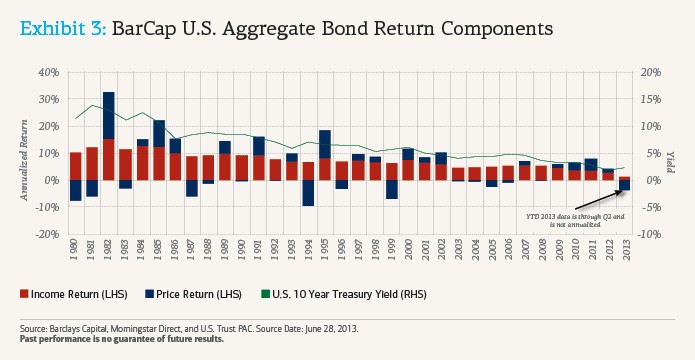3 Ways to Rebalance Your Portfolio
Post on: 30 Май, 2015 No Comment

Rebalancing Reduces Risk
Henrik Jonsson/ E+/ Getty Images
Once you decide on a long term investment plan. you must stick with it. Develop rebalancing guidelines up front: rules that tell you how and when you will change your asset allocation.
Rebalancing Rule #1 – Decide on Automatic or Manual Rebalancing
The Automatic Approach
Automatic rebalancing means you rebalance your portfolio at the same time each year, back to its starting target allocation, regardless of market conditions. It works like this:
Example: Assume your allocation is 50% stocks, 50% bonds. In years when the stock market is doing well, as equity values swell, your account may grow to a point where it is now 60% stocks/40% bonds. Rebalancing forces you to take profits from equities and buy bonds.
On the flip side, after bear markets, with equity values shrinking, your allocation may morph into 40% stocks/60% bonds. Rebalancing will force you to sell bonds and buy equities at bargain prices.
For most investors, this disciplined approach works best, and rebalancing once a year makes the most sense.
The Manual Approach
For investors taking a more active role, manual rebalancing means you decide when you are going to make changes to your portfolio. You might rebalance after periods of extreme returns in the market (equities up in excess of 20%), or just after times where you have experienced large market losses (equities down more than 20%).
This active approach is manual – rather than happening at the same time each year, you must initiate it based on market conditions. Using this approach you may only rebalance every other year, or after extreme market moves, rather than automatically at a set time each year.
For taxable accounts (non-retirement accounts) when you rebalance you will also want to pay attention to taxes. There may be a reason to realize gains or losses for tax purposes.
For an added twist, instead of rebalancing to your starting target allocation, use the two rebalancing guidelines below to force you to buy more equities when the market is down, and sell more equities when the market is up.
Rebalancing Rule #2 — When To Become More Conservative
During bear markets, people’s appetite for risk decreases. They decide they only like risk when it is working in their favor. They make a decision to rebalance to a more conservative allocation.
If they had been 70% equities, perhaps they decide they only want 50% of their portfolio in equities. In this way, the hurt themselves by selling low, and abandoning their well thought out strategy at the worst possible time.
I would suggest that you decide that you will only rebalance to a more conservative portfolio after a year of excess equity returns. This simple rule will keep you from selling stocks at a low point – as in during an extreme bear market.
At year end, if equity markets are up 15% or more, that would be the time to consider rebalancing to a more conservative allocation.
If you are within five years of retirement, accelerate this plan. Instead of waiting until a year where the market is up 15%, shift assets to a more conservative allocation after years where the market is up 10%.
Rebalancing Rule #3 — When To Become More Aggressive
The time to buy is when everyone else is selling. After extreme bear markets. consider increasing, rather than decreasing, your equity holdings.
At year end, if equity markets are down 15% or more, that would be the time to rebalance to a more aggressive allocation. Once markets recover, use Rebalancing Guideline #2 to tell you when to switch back to a more conservative portfolio.
If you are within ten years of retirement, take caution when using this guideline, or scrap it all together. If you do implement it, only become more aggressive if equity markets are down in excess of 25%. And then be quicker to rebalance back to a more conservative allocation after markets recover.














